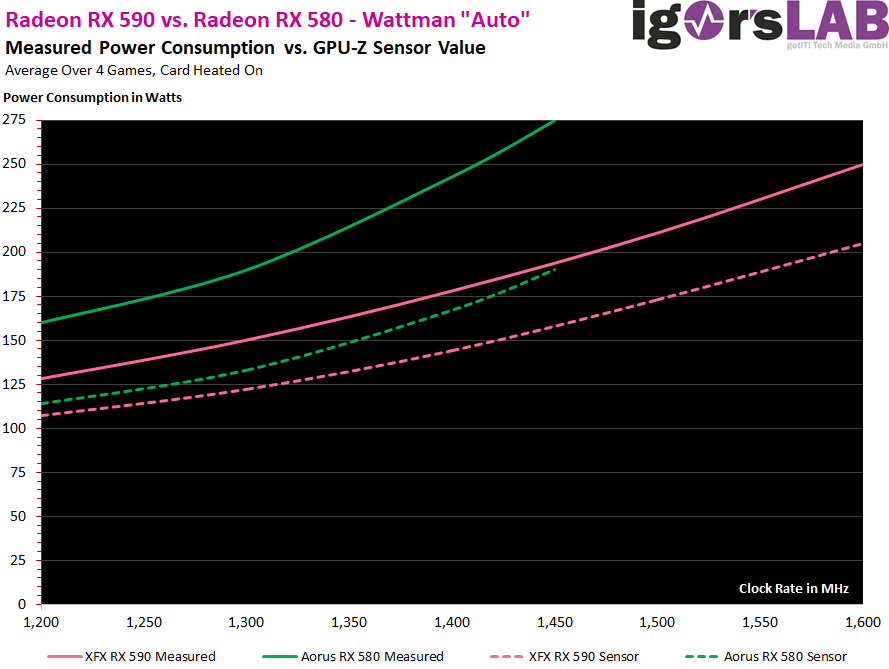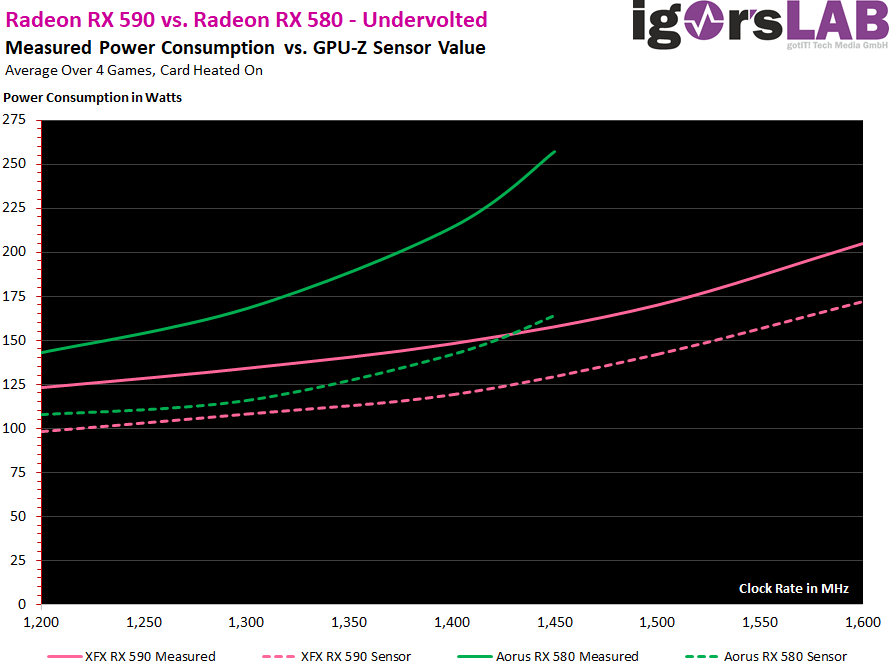Real measurement vs. Sensor values (e.g. GPU-Z)
Since I also have to deal with countless discussions about the read out "GPU-only" values, e.g. In GPU-Z and I have amassed miles of log files here anyway, it is easy to compare these sensor values with the measured values for the entire map and then to marvel at the new findings. The two diagrams below show why I was so amazed and the conclusions to be drawn from them.
The first, quite bitter realization for all lovers of the software tools is that the difference between sensor and measured values for the Radeon RX 580 is significantly greater than what I was able to determine for the Radeon RX 590. The usual formulas of fist can therefore be forgotten with confidence. If you look at the Wattman results in detail, not only is the difference between the two cards very different, but also the increase of the respective curves differs considerably from each other!

The same applies to the sub-voltage, where the values are different, but the tendency and the increase differ similarly. Yes, I have to disappoint, unfortunately, all those who have always predicted the power consumption Pi times thumbs up. It doesn't work like that anymore, at least not with the old benchmarks.
At least with the Radeon RX 590 you can still see a nearly similar increase, which can also encourage the calculator fraction. So if you want to calculate for yourself in the future, you can estimate at least roughly where you have landed on the basis of the two curves. For both cards. There can be no real guarantee, because the boards are very different in spite of everything.

Summary and conclusion
The Radeon RX 590 is really worth it and more than ever. A little down clocking can also be smart, because at approx. 1500 MHz is manually undervoltaged with almost 30% also the highest percentage savings in it. You don't lose a lot of performance, but you can save a lot. Not only at the socket, because everything that is not absorbed in power and thus converts into heat does not have to be loudly dissipated back to the environment.
So you spare your wallet, environment and ears at the same time! The few minutes invested with the good old Wattman are really well invested. Wellness by simply putting on your hands at no charge. That has charm, lordships. So dare…































Kommentieren